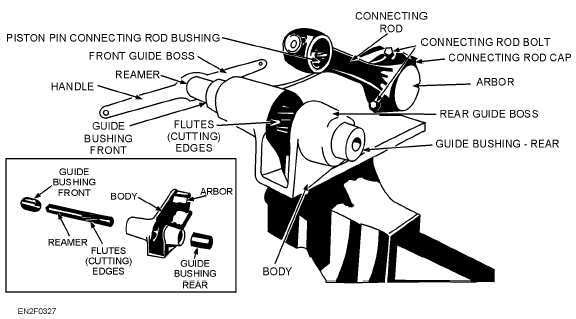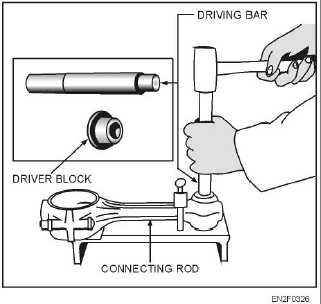Figure 3-26.–Removing or installing a piston pin bushing.
When you insert new bushings, be sure that the bore
into which they are pressed is clean and that the oil holes
in the bushing and the oil passages in the rod are aligned.
To obtain proper clearance, sometimes you will need to
ream a piston pin bushing after it has been installed.
Figure 3-27 shows equipment used to ream a bushing.
After installing a new bushing, check the alignment
of the rod with equipment such as illustrated in figure
3-28. Be sure to check the manufacturer’s technical
manual for details concerning clearances and alignment
procedures.
INSPECTING, MAINTAINING, AND
REPAIRING CONNECTING RODS
Most connecting rod troubles involve either the
connecting rod bearing or the piston pin bearing. You
can avoid these troubles by performing proper
maintenance procedures and by following instructions
in the manufacturer’s service manual. There are,
however, certain unavoidable troubles, such as cracked
connecting rods caused by defective material. Such
cracks must be discovered before they develop to a point
that the rod fails. Magniflux testing is considered the
best method for locating cracks. If you discover a crack
in a connecting rod, replace the rod; do not try to repair
it. If you have to replace a damaged rod, send it, with
other damaged parts, to a salvage center for possible
reclamation.
Do not repair defective connecting rod bolts, except
for removing small burrs by using a fine rectangular file.
If you doubt the condition of a bolt or a nut, replace it.
Check the connecting rod bore for out-of-roundness
with an inside micrometer. Make the correction and
recheck the bore. If the distortion is permanent, replace
the rod.
You can make plugged oil passages of connecting
rods serviceable by running a wire through them. In
extreme cases, you may need to drill the passages free
of foreign matter.
Figure 3-27.–Reaming equipment.
3-18



